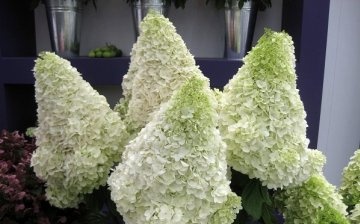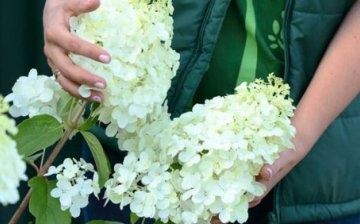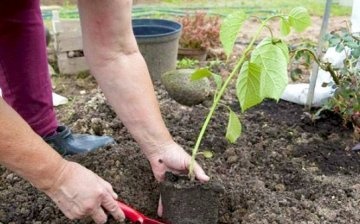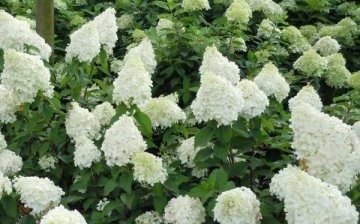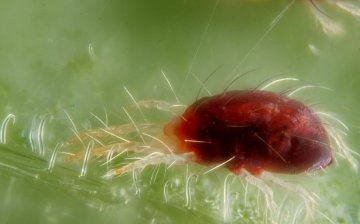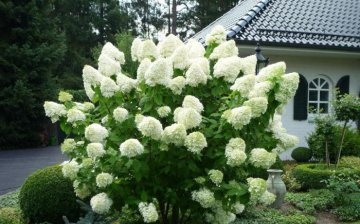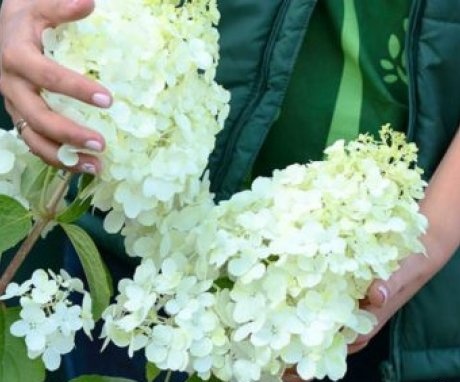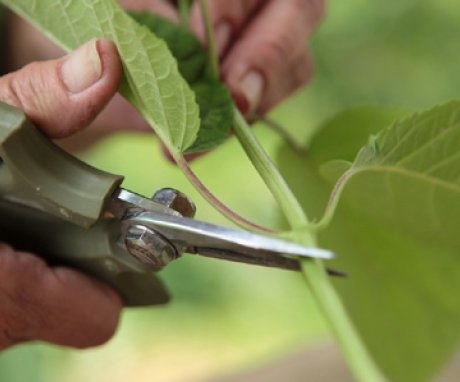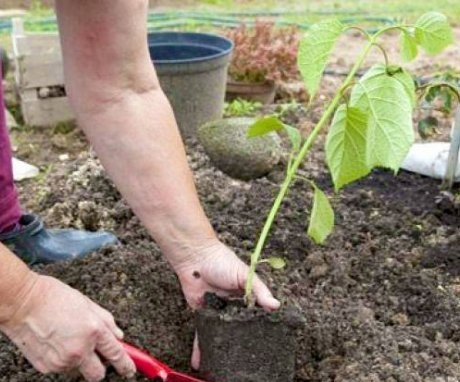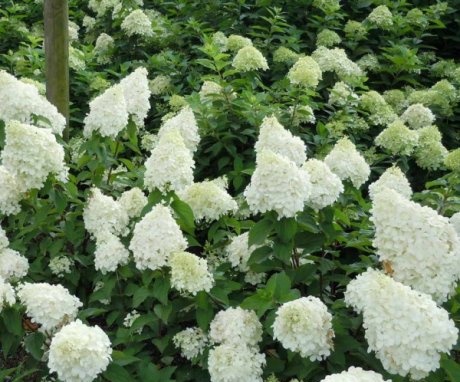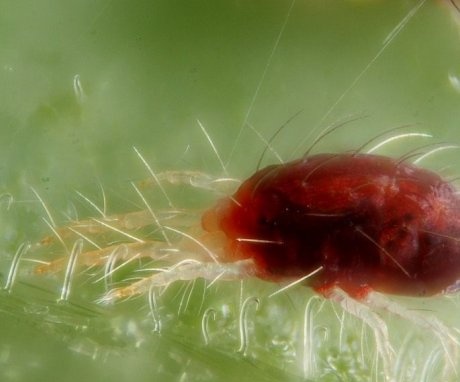Hydrangea "Polar Bear": the secrets of growing a bush
Hydrangea scientifically called "Hydrangea". Which in translation from Greek means "vessel with water" ("hydor" - water and "angos" - vessel). This name was given to the flower due to the similarity of its seed pods to a jug or flask. And according to legend, the plant was named after the sister of the prince of the Roman Empire Hortense.
Hydrangea "Polar Bear" Became known four years ago. It is the result of a Dutch selection of Limelife and Grandiflora varieties. The flower got its name thanks to the lush snow-white inflorescences. This hydrangea has rightfully earned its recognition, because it can become an adornment of any garden.
Content:
- Distinctive features of hydrangea
- Reproduction methods
- Landing rules
- Providing competent plant care
- Disease and pest control
- The use of hydrangea "Polar Bear" in landscape design
Distinctive features of hydrangea
The "Polar Bear" panicle hydrangea is considered the most successful variety. It is represented by a shrub or small tree, up to 150 cm high and wide. During flowering, the plant creates the illusion of lightness and airiness. Strong shoots reliably hold heavy flower caps and do not bend, which allows you to preserve the decorative effect of the flower without the use of additional measures for installing supports.
Large flowers are evenly distributed throughout the bush and the plant takes on the appearance of a huge bouquet.
"Polar Bear" blooms in the middle of summer and pleases with its color until the very frost. At the beginning of flowering, the flowers are white with a slight green tint, and over time they acquire a creamy color, which looks spectacular against the background of rich green elliptical leaves.
Additional benefits of this hydrangeas are:
- good frost resistance - the plant winters calmly at a temperature of minus 25 degrees
- unpretentiousness - it is easy to care for hydrangea and even an inexperienced beginner can cope with this task
- resistant immunity to diseases and harmful insects
- fast and complete recovery after winter freezing
- attracting pollinators to the garden - the flower is an excellent honey plant
Reproduction methods
A number of methods are used to propagate hydrangeas:
- Cuttings... Cuttings should be cut from medium-sized annual shoots that do not refract when bent. Thicker and more mature branches will take less root or not take root at all. A favorable time for rooting cuttings is the middle of summer. If cutting of cuttings is carried out in early summer, before flowering, then at the base of the fragment they are cut with a part of last year's shoot - "heel". The planting material is rooted in a moisture-absorbing weakly acidic substrate, which is represented by two parts of peat mixed with one part of coarse sand. To maintain soil moisture, its surface is covered with sphagnum moss.
- Reproduction using layering. Layers are obtained by bending the branches of the hydrangea to the ground and fixing them in a horizontal position.For these purposes, you can prepare a groove. From above, the shoots need to be well covered with soil. If necessary, the mother bush must be fixed in an upright position. A good time for such manipulations is spring or late summer. A year later, an independent young bush with its own root systemwhich can be separated from the main plant.
- Division of the rhizome. This method is advisable when transplanting an adult hydrangea. To do this, dig up healthy, well-developed bushes, clear the roots from the ground and divide the root into several fragments, leaving 2-3 growth buds on each part. Sections are treated with a solution of potassium permanganate and seated. This procedure is carried out in the spring-autumn period.
- Seed method. It is rather difficult to propagate a hydrangea by seeds, and "Polar Bear" and other varietal flowers are impractical. There is no guarantee that such plants will retain all varietal characteristics. They often degenerate.
But if it was decided to sow hydrangea seeds, then the procedure should be carried out in early spring:
- seed material is not stratified
- seeds are spread on the surface of the soil and lightly sprinkled with sand
- crops are regularly sprayed from a spray bottle
The sprouts appear within a month. For full growth, they are fed with a solution of complex fertilizers... In autumn, young plants reach 35-45 cm and they can be planted in open ground, well covered for the winter, where they take root and survive the winter.
Landing rules
A shaded place is chosen for planting. You can plant hydrangea seedlings from spring to autumn. The main condition for effective rooting is healthy and dry roots. Activities should be carried out in cloudy, cool weather, because in the heat the plants take root badly.
The soil should be slightly acidic. You can fight this effect by placing peat and soil for azaleas in the planting holes in layers. And you can prepare the substrate yourself by mixing peat, leaf humus and compost in the same amount. The latter component is often replaced with potassium sulfate or superphosphate.
Planting holes should be at least half a meter deep and 60 cm in diameter.
The roots are shortened before planting, and the shoots are cut to 3-5 buds. This contributes to the development of a more lush crown. The seedlings are placed in holes, covered with soil mixture, watered and mulch.
As mulch, you can use film, sawdust, pine needles or straw. This ensures optimal air exchange and prevents crust formation. If the "Polar Bear" hydrangea is used for hedge, then the interval between the bushes should be about two to three meters, In flower beds - the distance may be greater.
Providing competent plant care
Hydrangea "Polar Bear" cannot be called a capricious plant, but in order for the flower to develop correctly and have a spectacular appearance, some conditions will have to be met:
- Irrigation. Hydrangeas love moisture, so watering should be regular and abundant. Plants should receive about 30 liters of water per week. For the prevention of diseases, a little potassium permanganate is added to the irrigation water.
- Top dressing. You can feed hydrangeas mullein and complex fertilizers. The procedures are carried out in parallel with watering.
- Loosening. For the proper development of a plant, its roots need to provide access to oxygen. To do this, you should regularly loosen the top layer of the soil, to a depth of about five centimeters.
- Mulching... Mulch helps protect the roots from overheating and retain moisture. Sawdust, peat or pine needles can be used as a covering material.
- Transfer. It is carried out as needed if the plant is sick or has acquired an unkempt appearance due to old age. It is customary to hold events in early spring, until young shoots have begun to grow.
- Crown formation.Hydrangea bushes "Polar Bear" tend to thicken. To exclude such a development of events and give the bushes a neat crown, preventive pruning should be carried out every spring. During the procedure, damaged shoots and branches growing in depth or sticking out to the sides are removed. Such pruning contributes not only to the formation of the crown, but also provides a full air exchange and increases the plant's immunity. And the flowers do not grow smaller.
- In the autumn, rejuvenating pruning is carried out. The branches of old bushes are cut out to 2-4 buds, and damaged and dried shoots are removed in the spring. The tops of last year's branches should not be touched.
Disease and pest control
The "polar bear" rarely gets sick. They often develop with non-compliance with agricultural techniques and waterlogging. The most common are:
- Tracheomycotic wilting is a fungal disease that affects the roots and blood vessels of a plant. As a result, material exchange is disrupted, the flower withers and dries up. The pathogen can live in plant debris for many years. Affected plants should be destroyed. As a preventive measure, you need to remove all organic residues.
- Powdery mildew - the cause of the disease is a fungus. It manifests itself as yellow spots on the leaves. When symptoms appear, the plant is treated fungicidal preparations and reduce watering.
- Septoria - develops during the growing season. It appears as small brown spots on the leaves, which subsequently merge and cover the entire leaf area. The disease causes the hydrangea to dry out. To treat the disease, the plants are sprayed with a fungicidal solution, and the soil is fertilized with potassium permanganate.
- Rot - affects the root system and spreads to all tissues of the flower, which leads to its death. For the treatment of hydrangea, a transplant is needed, during which all damaged parts are removed, and the sections are sprinkled with activated carbon. Further, the flower is treated with fungicidal preparations and watering is reduced.
- Chlorosis - manifests itself as a result of iron deficiency. Leaf tissues lose color, and the veins do not fade and remain clear. Complex feeding with a high iron content will help the flower.
- Hydrangeas often infect common and European crayfish, which is the enemy of all deciduous and woody plants. It manifests itself in the development of ulcerative lesions, in place of which growths form on the bark. Inevitably leads to the death of the plant.
Of the pests, snails, thrips, spider mites, shiny yellow leaf beetles, nettle weevils, leafworms, larvae and moths of the scoop can attack hydrangeas. The slobbering penny and bedbugs regularly settle on young plants.
Preventive treatments are carried out against pests with solutions of fungicidal and acaricidal preparations, traps are set, affected plants or their parts are destroyed.
The use of hydrangea "Polar Bear" in landscape design
Hydrangea "Polar Bear" will harmoniously fit into any garden, so it is especially popular with landscape designers:
- Hydrangea looks good in single plantings and in flower arrangements, and it is also used to decorate hedges.
- It can often be found in gardens decorated in the "Russian style" - a pair of it can be made by: Birch, willow, lilac or maple... Also, hydrangea is favorably combined with conifers and flowering perennial shrubs.
- Hydrangeas are often complemented by alleys and trimmed borders decorated with boxwood, Japanese lilac and alpine currant.
Hydrangea "Polar Bear" quickly won the love of experienced gardeners and beginners due to its unpretentiousness, resistance to frost and many diseases. It is enough to follow the standard rules of agricultural technology to decorate the garden with spectacular live bouquets.And also hydrangeas "Polar Bear" are often used to cut tall peduncles, which can revive any interior for a long time.
More information can be found in the video:



